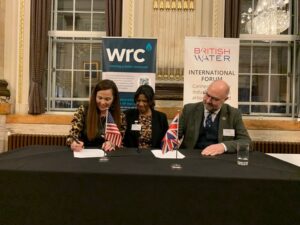Resource demand gap requires investment, says water minister

He called for greater collaboration and innovation in finding solutions.
“Growing demand for water and more intensive periods of drought are projected to create a supply-demand gap if we don’t improve water efficiency and invest in new water resource infrastructure,” said Moore.
“In England, the Environment Agency’s review of draft regional resource plans found that by 2050 an additional 4,000 million litres of water per day is needed to meet future demand pressures.”
Moore said tackling this issue must be delivered through a combination of demand management measures, such reducing leakage and lowering consumption, with regulation also playing a key role.
The UK Government has set new legally binding targets to reduce the use of public water supply in England by 20% per person by 2038 and halve leakage by 2050.
The world is facing an imminent water crisis, with demand expected to outstrip the supply of fresh water by 40% by the end of this decade, according to a landmark report ‘Turning the Tides’, published last year by the Global Commission on the Economics of Water.
Further highlighting the urgent need for proactive and ambitious approaches to water management, British Water’s reception also drew attention to the issue of the gender gap in water.
Speaking after the reception, Lila Thompson, British Water’s chief executive said, “Tackling water issues such as the demand gap and the lack of diversity and inclusion effectively requires a global approach that transcends national borders. By fostering collaboration, sharing knowledge, and pooling resources, the international water community can ensure sustainable water management for all, addressing this critical challenge with a united front.”













